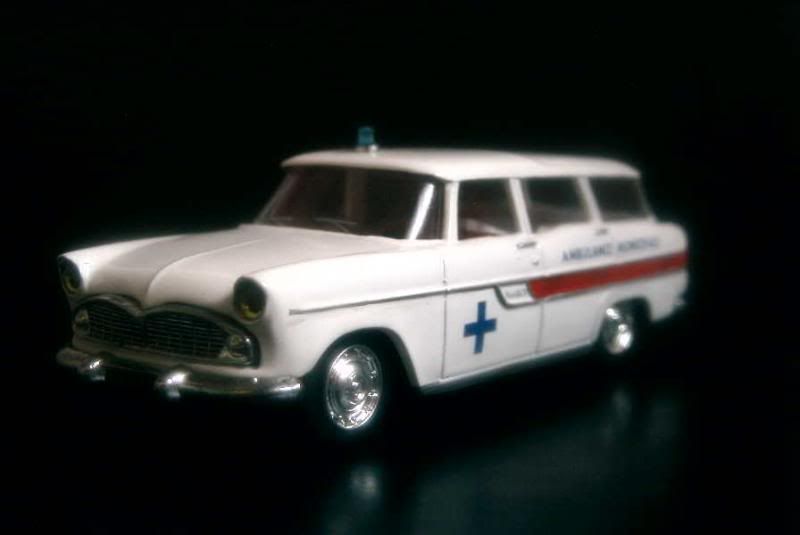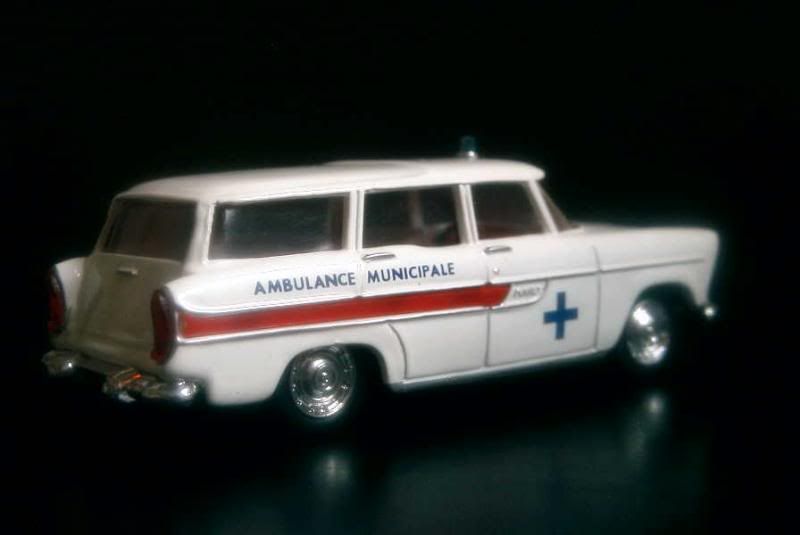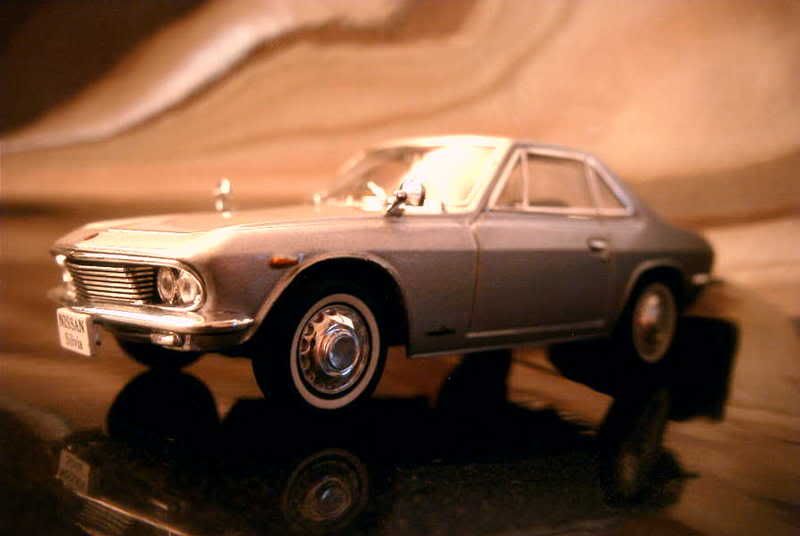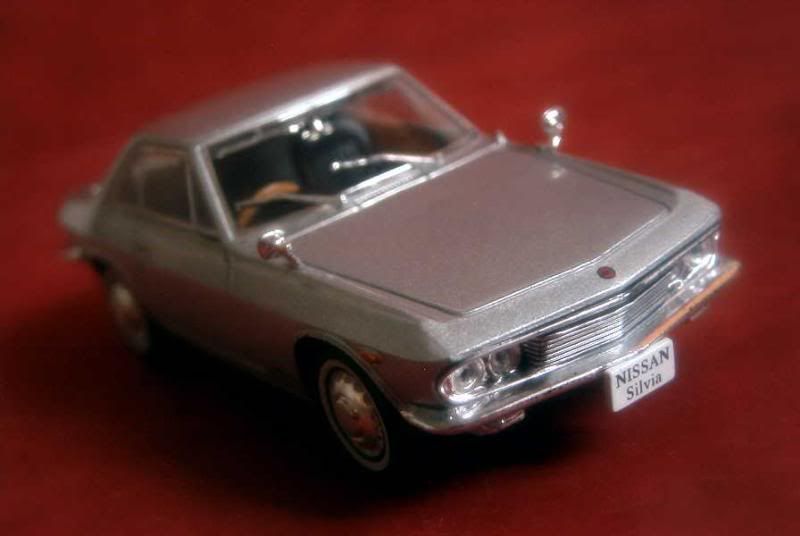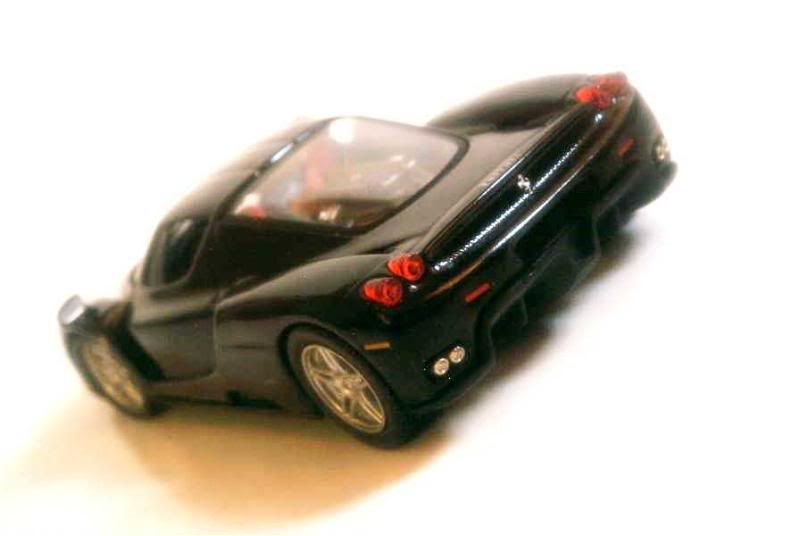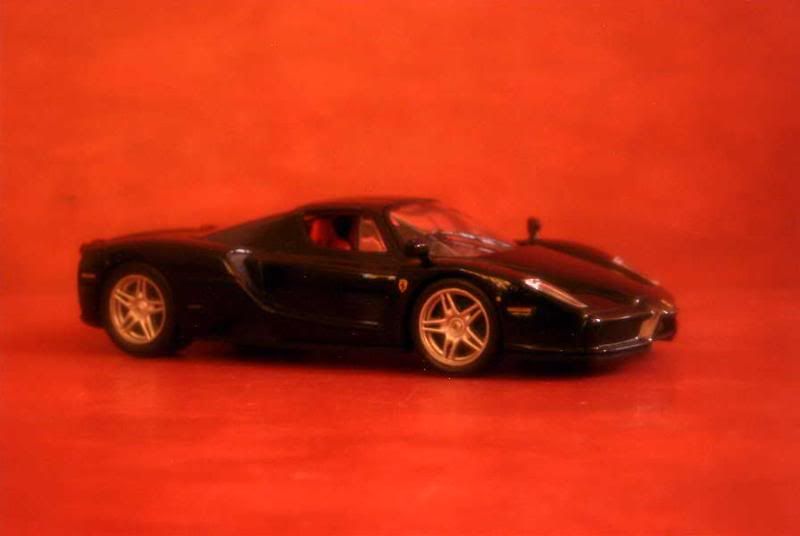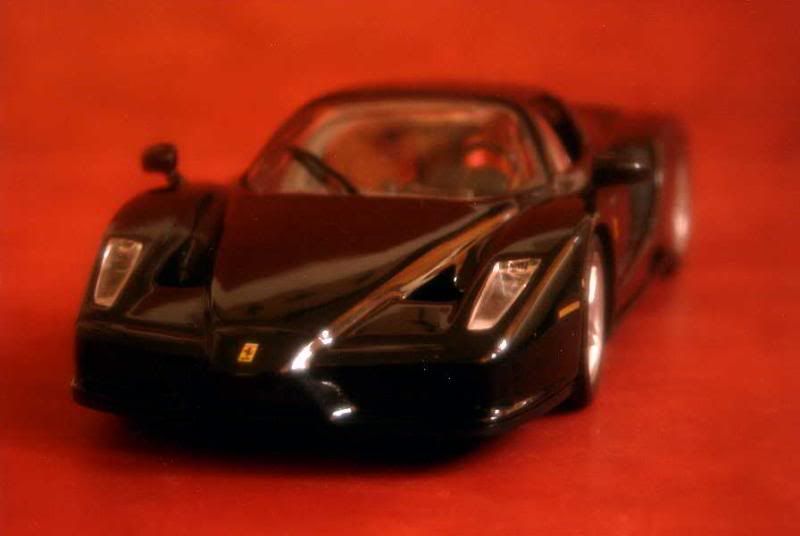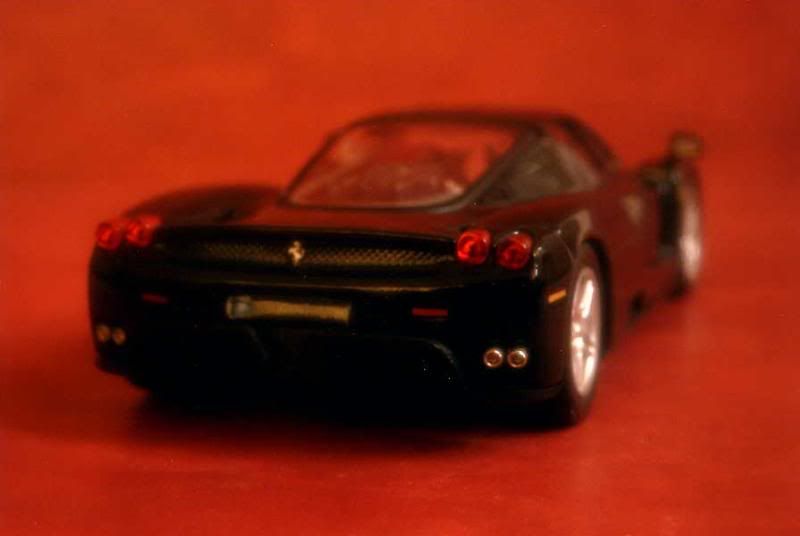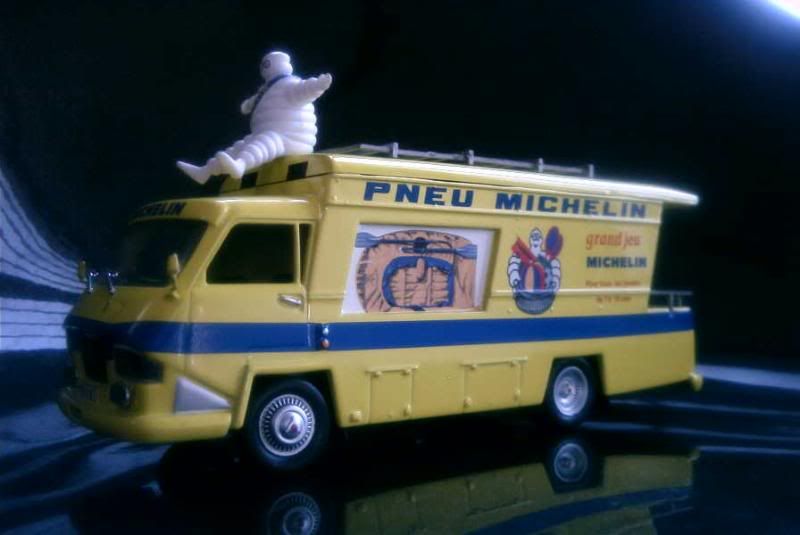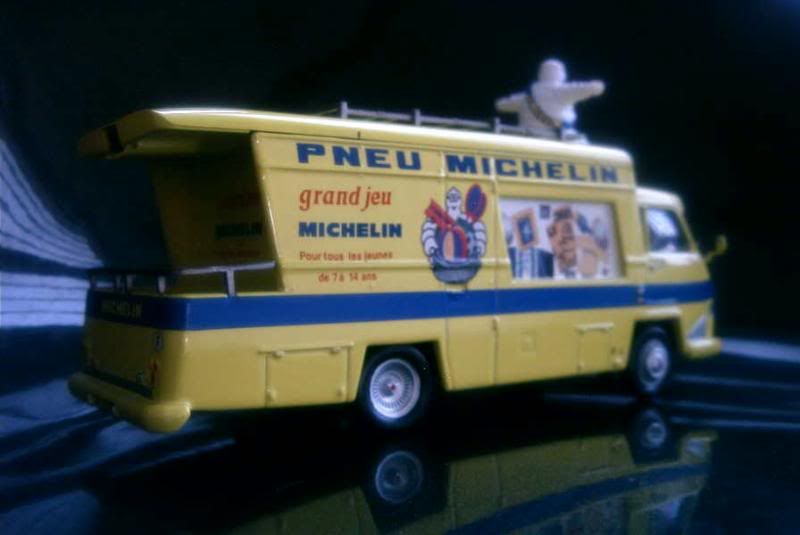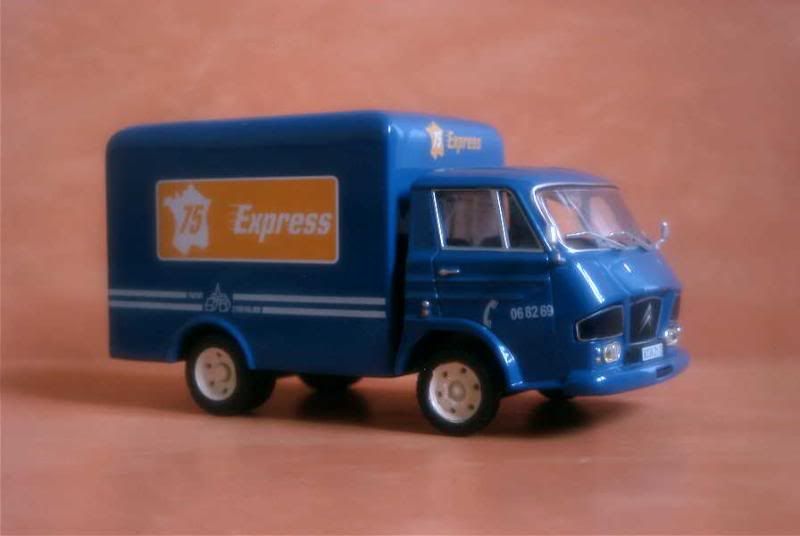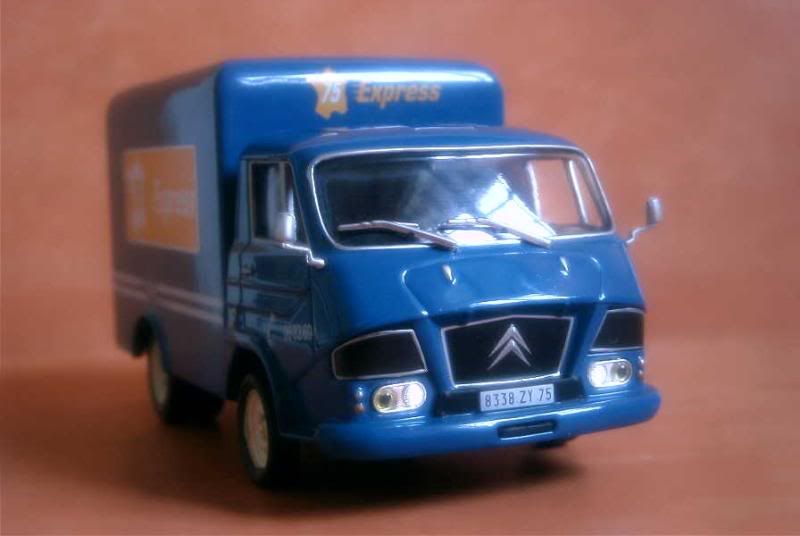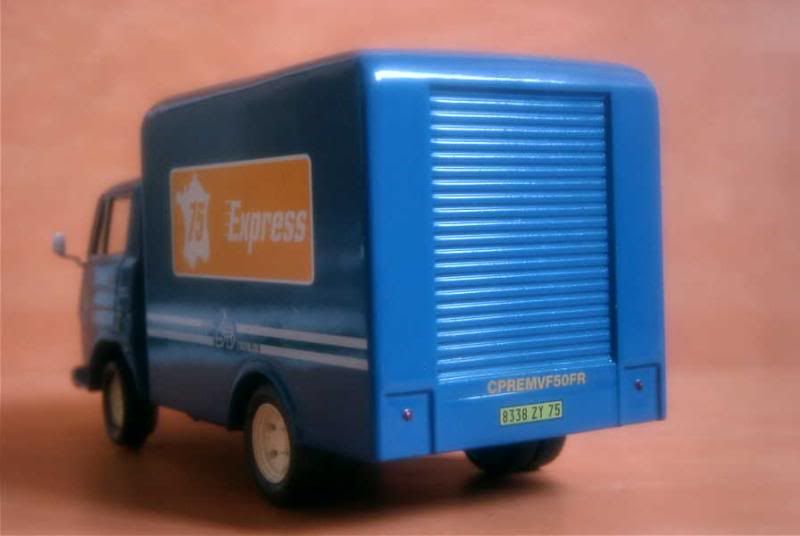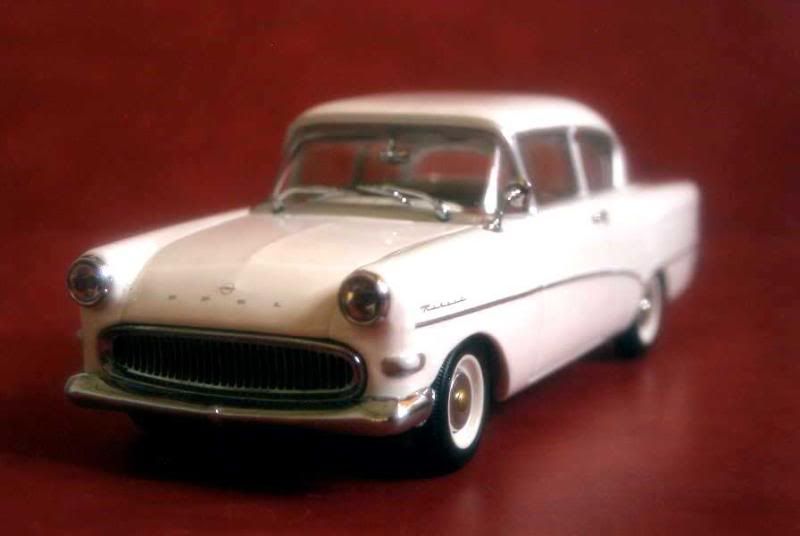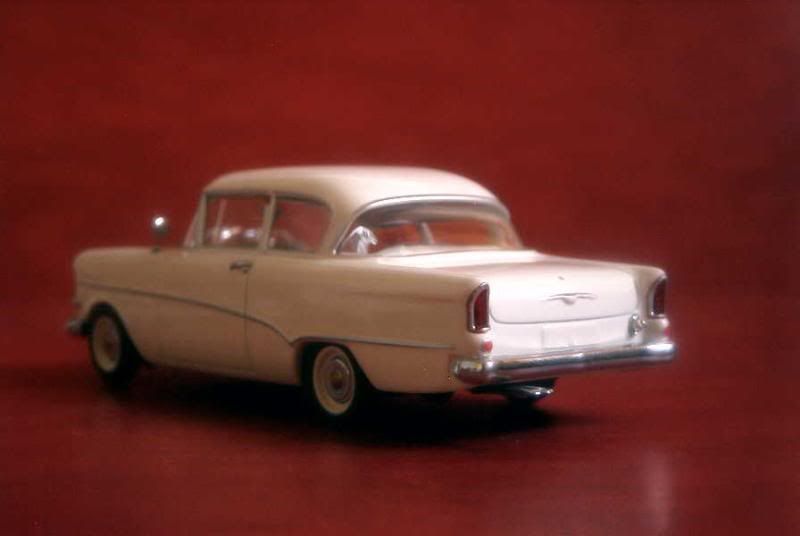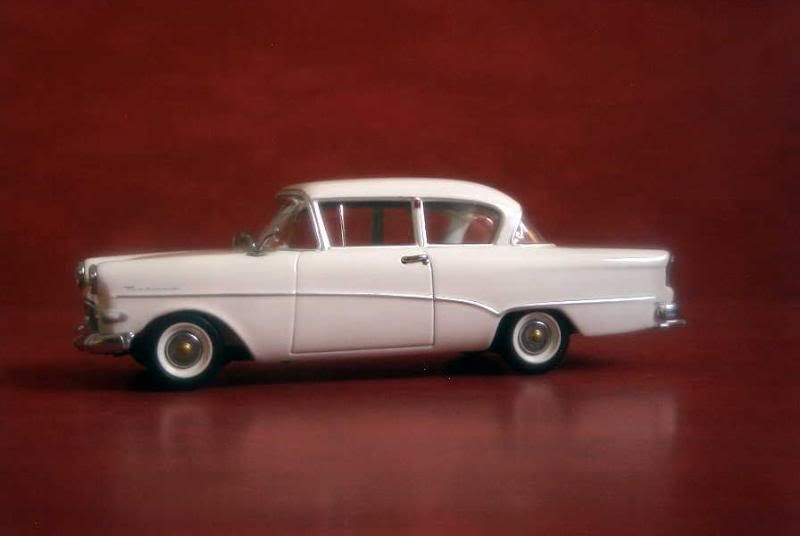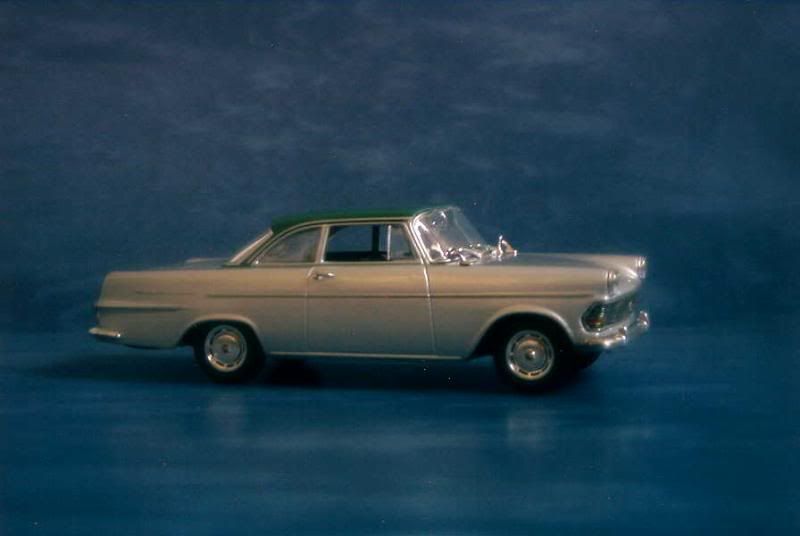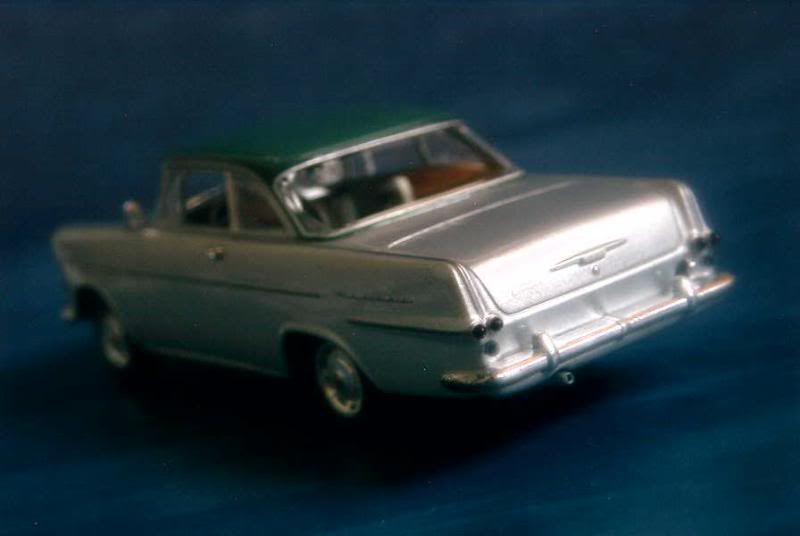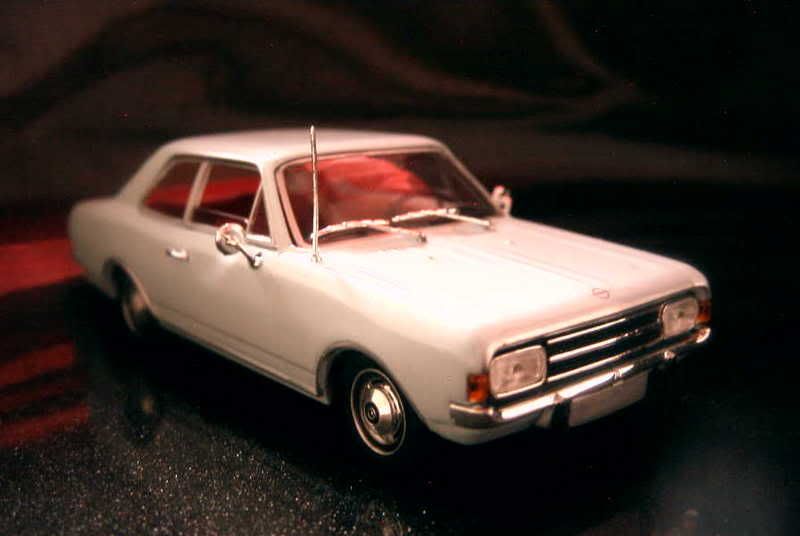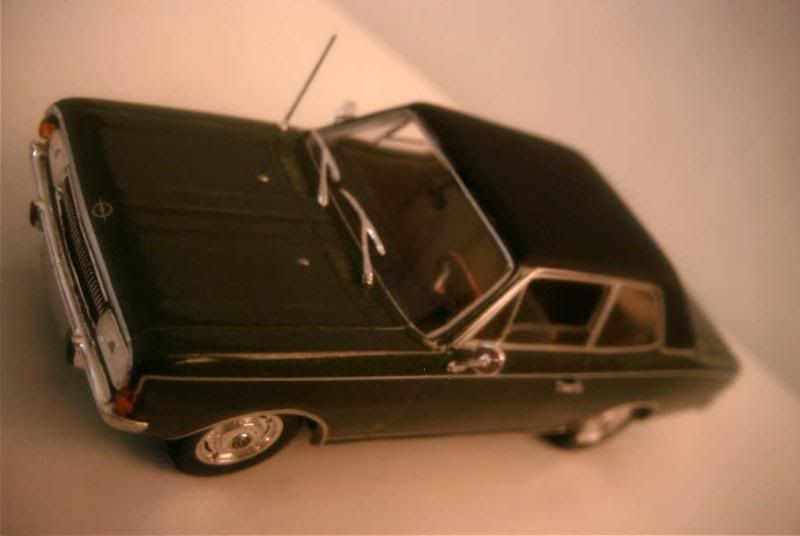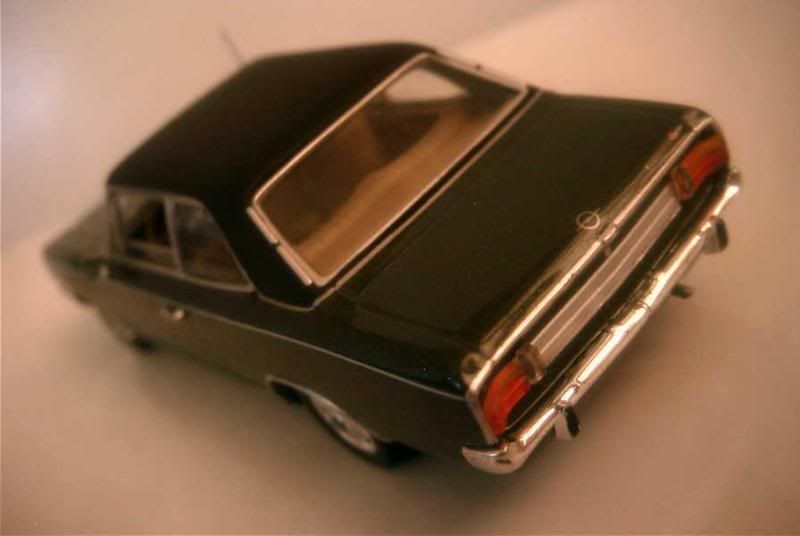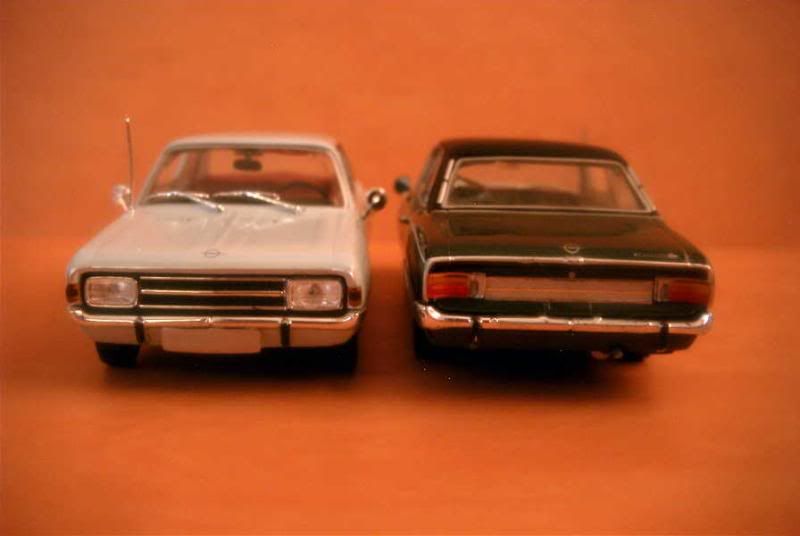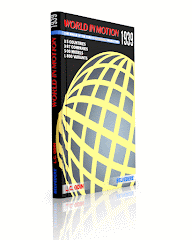A little historyBy the early Fifties, discussions were easy between Simca and Ford. To cope with the new Aronde’s success, Simca wanted to increase its industrial capacities and develop its range. Ford S.A.F., the French subsidiary of the American giant, was willing to sell its large and modern Poissy plant, complete with the right to manufacture its range of V8 saloons and trucks. The deal was signed in 1954.
Simca’s new top-of-the-line model was the Vedette. The first generation
Vedette had been produced since only 1948 but its bulbous body was now totally out of fashion. A few months before the agreement, Ford therefore introduced its second-generation Vedette, a large, chromed, slightly finned saloon which unmistakeably had a Ford look. Engine was again a V8, displacing 2.4 litres for 80 hp. The ride was as soft as could be expected from an American ersatz, while the gas consumption was, well, consequent...
Simca was all too happy with its new model. Though of Italian origins itself, it is interesting to see how the company maintained an American approach to this particular range, revising its models every year as was the habit across the Atlantic, adding more chrome, extending the fins, creating several lines with different names depending on their equipment, adding an estate presented as a luxury rather than utilitarian vehicle and, soon, going as far as introducing one of the only Continental kits ever seen in Europe!
Originally, the Vedette, sold as the plain Trianon, the fancier Versailles and the luxury Régence, sold rather well, appreciated by those who wanted a trendy American car without paying the hefty prices asked for the genuine thing. The roomy and well-appointed estate, called Marly, was introduced in 1956. Though the lack of an automatic gearbox was the only American touch that was absent from the car, a semi-automatic contraption was proposed as an option from 1957. Actually, the only real concern about the car regarded its brakes: the size of the wheels having been reduced to a small 13 inches, the surface of the drums was too limited for them to be truly efficient.
Nineteen fifty-seven was indeed a busy one for the Vedette. A heavily reworked car was being prepared, and was introduced at the Paris motor show in October. The cars were now christened Ariane 8, Beaulieu and Chambord. With new, tall rear wings, panoramic windshield, chromes all around, Dagmar-fitted bumpers and flashy two-tone paint, the Chambord was as American as Simca could make it. Nonetheless, an event had occurred a few months before that would change the car’s career.
A few months before, Great Britain and France partnered in a military plan set up to recover the Suez canal, which had just been nationalized by Nasser. Along the way, they garnered the help of the Israelis. The operation was a complete success, a few days being enough to grab back from the Egyptians this strategic passage between the Mediterranean Sea and the Indian Ocean. On the diplomatic stage though, this was another matter. Fearing that an increased communist influence in the region would be the outcome of the operation, the United States disavowed its allies. Ironically condemned by both Washington and Moscow, the Anglo-French task force, though victorious, had to withdraw. Triumphant, Nasser blockaded the canal by blowing up the ships seized while travelling through it.
So, what this all has to do with the Vedette, could you ask. Well, the closure of the Suez canal effectively deprived Europe from most of its much needed fuel, provided for the major part by oil fields recently discovered in the Gulf. With gasoline prices taking a steep rise and sales regulated by coupons in France, gas-guzzlers as the Vedette were facing hard days. Simca cleverly reacted by immediately introducing the Ariane, a model which combined the Vedette’s large body with the Aronde’s economical 1.3-litre four. This makeshift model encountered an instant success, while the sales of the V8-powered Simcas collapsed. Despite the introduction in 1959 of a truly automatic transmission, Simca’s “Rush-Matic”, and the addition of a luxurious Présidence (leather interior, glass separation between front and rear seats, telephone, and the above-mentioned Continental kit), nothing helped, so Simca subsequently gave up all efforts towards its Vedette in order to concentrate on more saleable models. The last Vedette was built in 1961, while the Ariane was retained for two more years. No successor was given to the Vedette, while the
1300/1500 followed the Ariane as Simca’s new top-of-the-line – a more modest car perhaps, but sold in much larger numbers!
It has to be noted that Vedettes were assembled in two countries outside France: by Chrysler in Australia, inaugurating a cooperation between the two companies that would last until the American corporation took over the French company, and, as our Brazilian friends shall know, in their own country, as late as 1969 as the restyled Simca Esplanada – a strange mix of Mopar’s Sixties-style front grille and rear ends, sandwiching a typically Ford central section dating back from the Fifties...
About the modelsModel: Ford VersaillesYear: 1955
Maker: Ixo
Scale: 1/43
Distributed by: Altaya as no.28 of its
Nos Chères Voitures d'Antan press series
Acquired: brand new, in March 2005, in Souillac, France
A nice and rather accurate model. I think it’s fair to allow it a 13/20 rating.

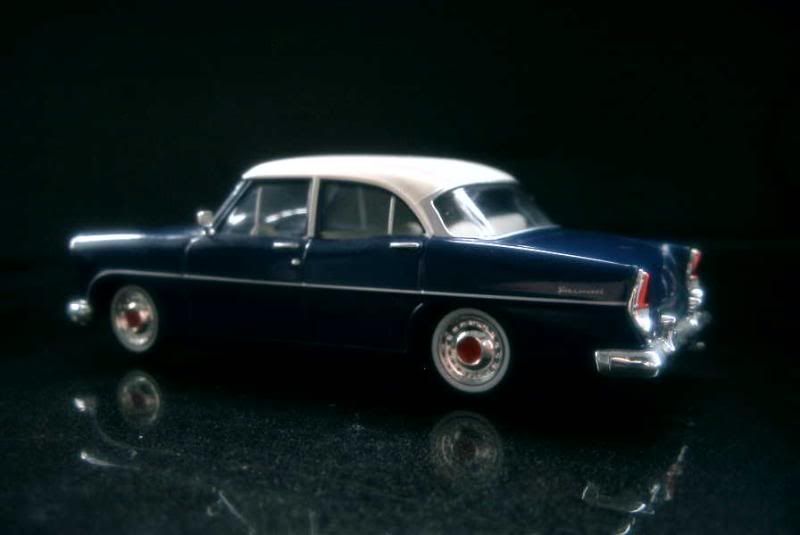 Model: Simca Régence
Model: Simca Régence
Year: 1957
Maker: IxoScale: 1/43
Distributed by: Altaya as no.21 of its
Les Belles Années Simca press series
Acquired: brand new, in December 2007, in Souillac, France
Another correct model by Ixo, though unfortunately betrayed by ugly wheels. My rating is 11/20.

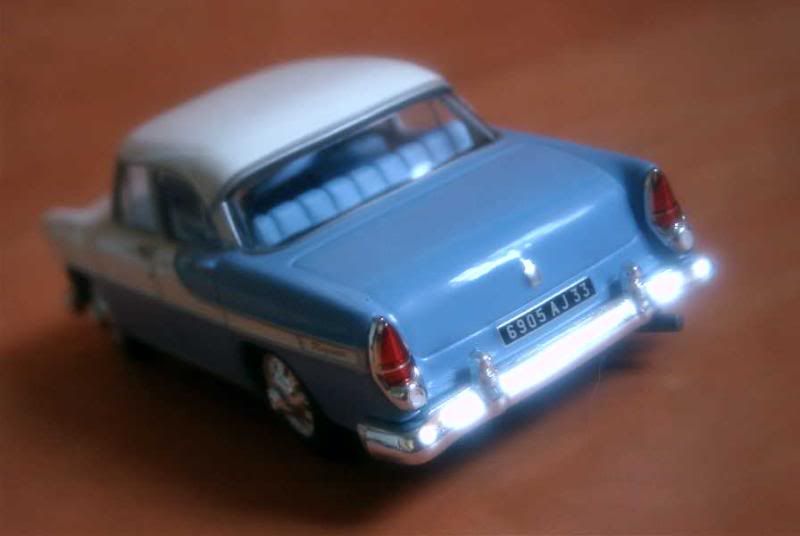
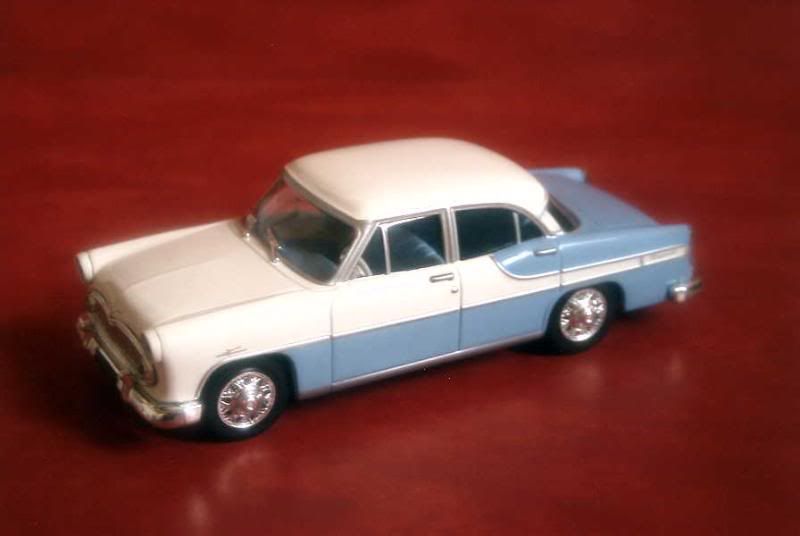 Model: Simca ChambordYear:
Model: Simca ChambordYear: 1958
Maker: Ixo
Scale: 1/43
Distributed by: Altaya as no.41 of its
Nos Chères Voitures d'Antan press series
Acquired: brand new, in October 2005, in Souillac, France
Good model with a nice paint but few separate parts - door handles and various decorations are moulded with the body then painted. But my main reproach is actually the fact that it has apparently been modeled from a collector’s car and features some elements (front position lights and hubcaps) that belong to different model years and are therefore incompatible. My rating is 12/20.
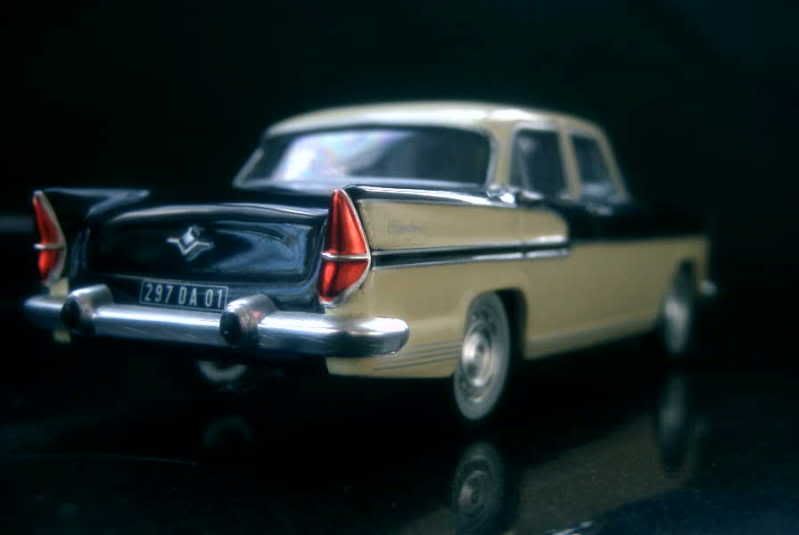
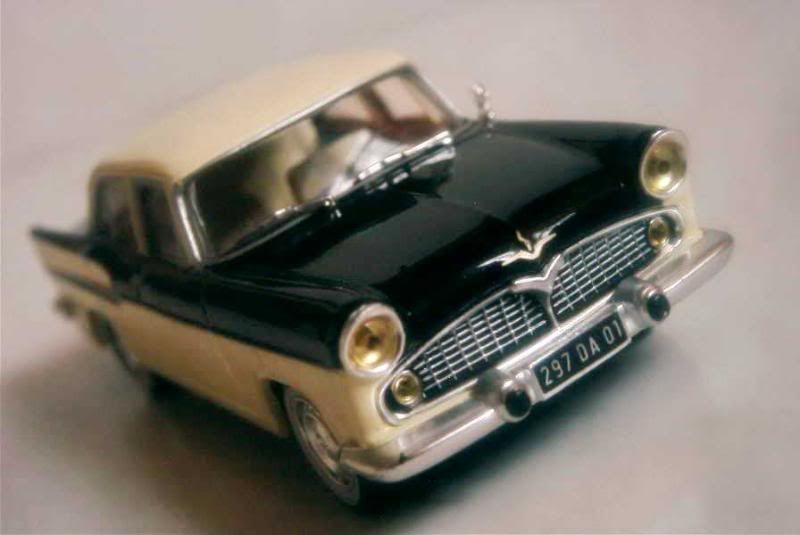
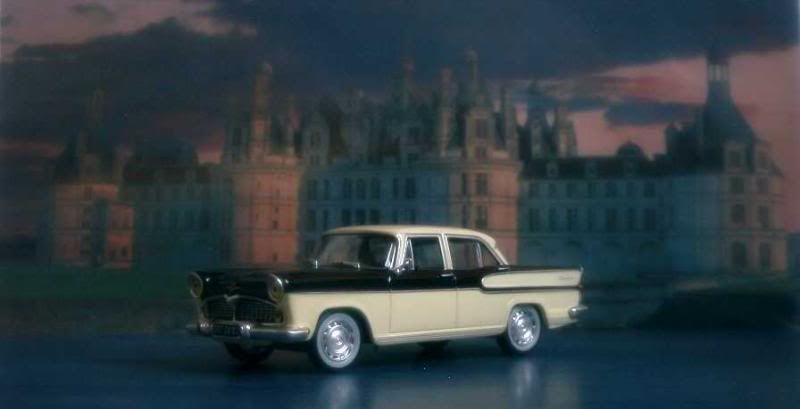 Model: Simca Présidence
Model: Simca Présidence
Year: 1958
Maker: IxoScale: 1/43
Distributed by: Altaya as no.2 of its
Les Belles Années Simca press series
Acquired: brand new, in December 2006, in Hong Kong, S.A.R.
A very nice model, and my favourite Vedette when I was a child. Simca intended the car for businessmen and ministers. The latter almost never rode in it, preferring the Citroën DS. My rating is a good 14/20.
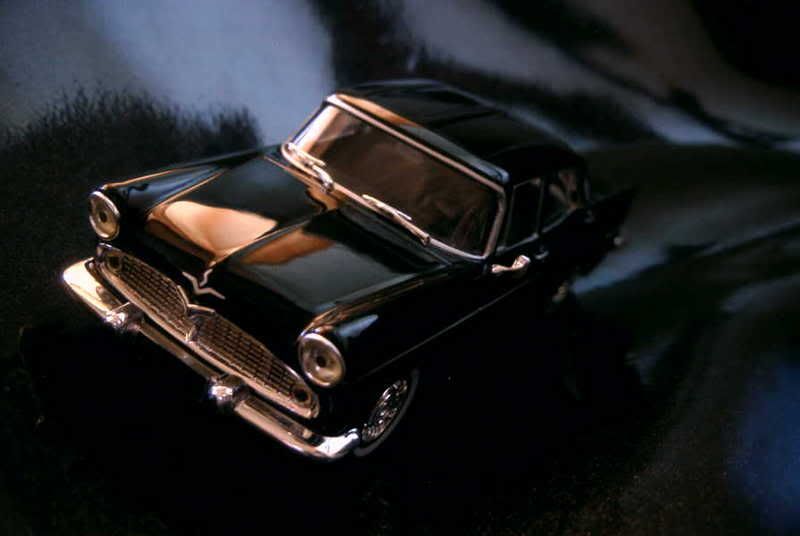
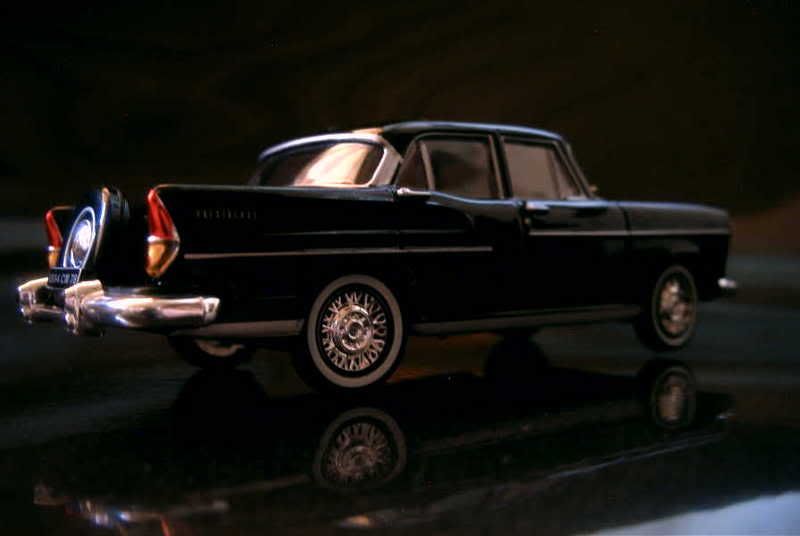 Model: Simca Ariane
Model: Simca Ariane
Year: 1959
Maker: IxoScale: 1/43
Distributed by: Altaya as no.6 of its
Les Belles Années Simca press series
Acquired: second hand with stand and box, in October 2007, through mail from a fellow collector from Rouziers de Touraine, France
Perhaps riding a little too low but otherwise very acceptable and worth 12/20.
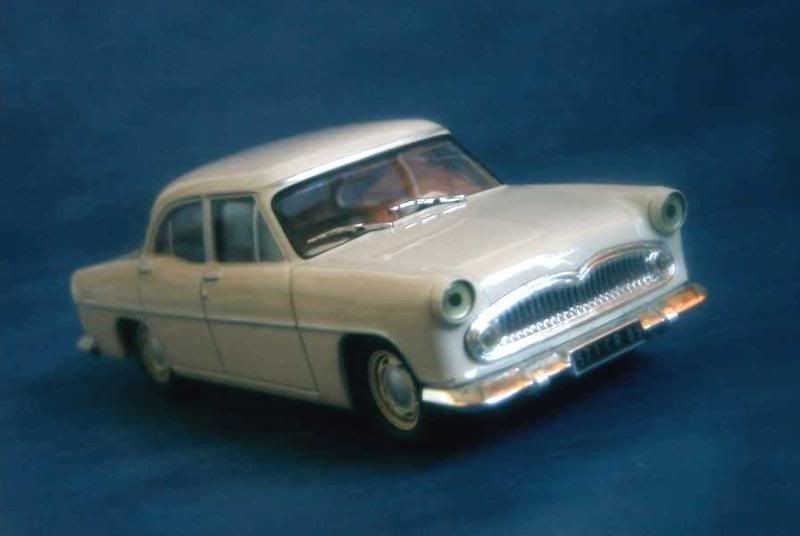
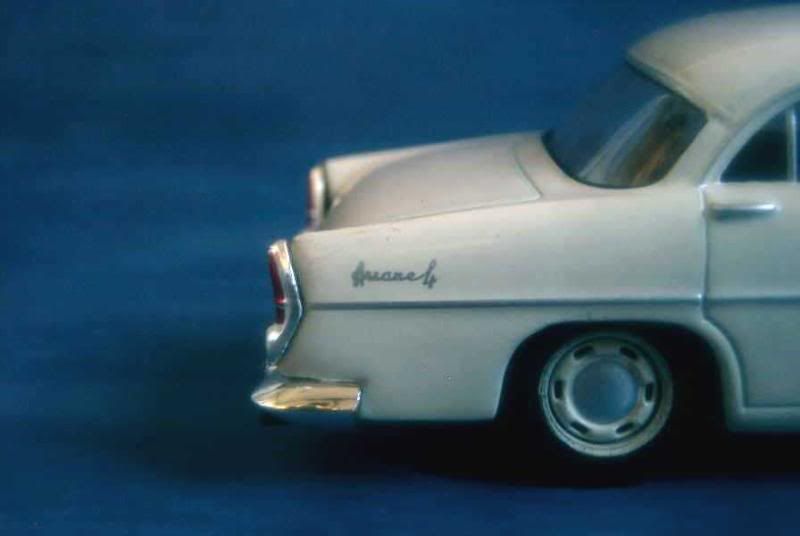 Model: Simca Vedette Présidentielle
Model: Simca Vedette Présidentielle
Year: 1959
Maker: IxoScale: 1/43
Distributed by: Altaya as no.16 of its
Les Belles Années Simca press series
Acquired: second hand with stand and box, in October 2007, through mail from a fellow collector from Rouziers de Touraine, France
Nice and impressive version of the presidential parade car based on the Vedette, though some details such as the tricolore perched onto the bonnet somewhat lack finesse. Seldom used by the presidency as General de Gaulle disliked its American style, it nonetheless carried president Kennedy on his visit to Paris. My rating is 13/20.
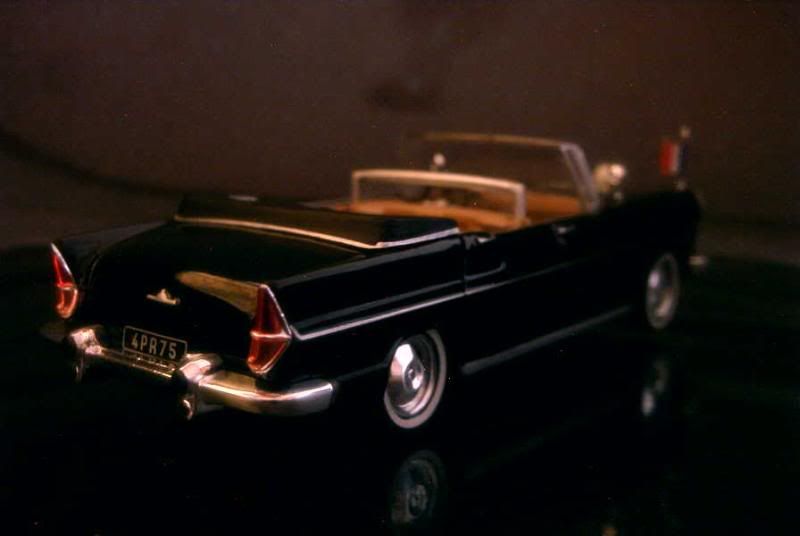
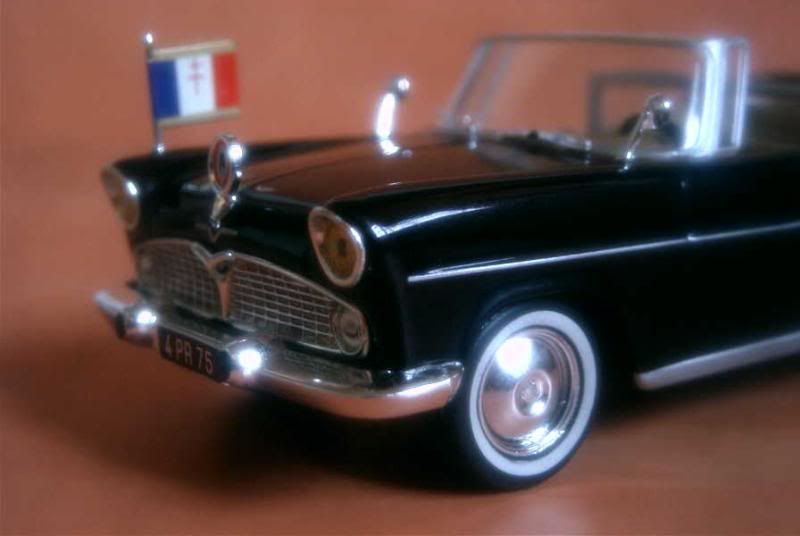 Model: Simca Marly
Model: Simca Marly
Year: 1960Maker: Eligor
Scale: 1/43
Distributed by: Atlas as no.11 of its
Les petits utilitaires des années 50-60 series
Acquired: second hand with neither stand nor box, in October 2007, in Brive, France
Details can seem rather symbolic but that isn’t without reason, as Eligor is producing this die-cast from the moulds used by Norev to produce a plastic version of the same car during the Sixties. Having this car makes me very happy as I had the original Norev when I was a child - that is, until I unfortunately stepped onto it... To modern standards, this car is probably not worth more than 9/20, but once again, this is the reproduction of an old toy which, in its times, was splendid.
